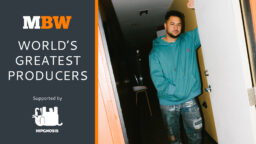There was never a better time to be an independent artist than now.
The DIY artist sector’s annual revenues grew 34.1% in 2020, generating $1.2 billion globally, according to trusted analysis platform Midia.
For artists operating in this space, creative independence also means financial self-reliance, and especially at a time when touring isn’t possible, selling rights might be one of the only ways for an artist to access enough cash to expand their business.
US-based finance firm Sound Royalties proposes an alternative. The firm offers creators advances on royalties, enabling them to fund their careers without signing away their rights.
Sound Royalties has also expanded its services to offer expertise for those looking to sell their catalogs, as well as finance for the interim period between a sale and arrival of cash from the deal (although the company advocates that creators hold onto catalogs, when possible)
According to founder and CEO, Alex Heiche, he’s now running “the largest private financial service company” in the music industry – with 50 full-time employees and continued global expansion on the horizon.
Heiche can’t say how many advances the company has paid out so far, but does say that it works with hundreds of thousands of songs with thousands of individual streams.
Artists that Sound Royalties has worked with include Lil Wayne (in 2018) to help finance a number of projects while he was locked in a legal dispute with Cash Money and Universal Music, and Wyclef Jean, who got backing for his Carnival World Music Group in 2019.
The company has also helped facilitate “quite a few” catalog sales, says Heiche, which resulted in the launch of Sound Royalties’ new Catalog Sales Support service in February (available for any musician earning more than $50,000 in royalties per year).
Heiche tells MBW that the motivation for launching this service was seeing creators that Sound Royalties had given advances to not being properly remunerated for the sales they’d decided to make.
“We would see them go out and market and then the buyers would come to us and pay us off and we’d see the big disparity in those transactions,” he explains.
“Quite often, creatives don’t necessarily understand either what the value of the asset is or what’s included in the sale.”
“Quite often, creatives don’t necessarily understand either what the value of the asset is or what’s included in the sale.”
alex heiche, sound royalties
Heiche’s company offers advances to artists earning more than $3,500 a year in music royalties. Advances span from $3,000 to over $10 million. How much is offered, and how much it costs, depends on individual situations, with pricing based on the risk that’s being taken.
He explains: “To determine the pricing, we look at a combination of about 10 to 12 variables such as, ‘What is the age of the music? Is it a standard pre-2000 that’s going to keep paying? Is it a brand new song? What’s the genre? Is it a single song?
“Is it a catalog? Is it international income predominantly or domestic?’ All of that goes into our secret recipe that enables us to forecast what someone’s going to earn very accurately and then allow them to leverage different levels of what we offer.”
Heiche founded Sound Royalties after a number of years working in high tech software, and then speciality finance. In 2013 he decided he wanted to join an industry he was passionate about and started investigating what financial services were offered in music to discover where gaps might lie.
He recalls: “I understood the financing side, came to the market with that approach, and then I visited all the banks and understood that, unfortunately, they had to turn down 85% of the creators that came through their doors, and that’s the ones who come through their door.”
Deciding he wanted to help fill the funding gap, Heiche visited a few already existing financial services companies to see if he could partner with them or acquire one, but didn’t like the model many of them operated with, which was focused on buying copyrights.
He wanted to offer a solution that would create long-term relationships, instead.
Heiche explains: “If someone has a wall of money coming in a spike, we don’t want to necessarily rush to end that relationship, so enabling them to have ongoing income was a benefit to them, and the benefit to us is to prolong the relationship.”
Here, we talk to Heiche about the advice he’d offer to creators looking to sell their copyrights, the impact of the growing catalog acquisition market on his company, what he’d fix about the music business and the ambitions he has for Sound Royalties.
As you know, there’s been a huge interest in the catalog acquisition space in recent years, partly propelled by Hipgnosis Songs. What impact is that having on Sound Royalties and what you’re trying to do?
It’s prompted creators to look at and understand the value of their royalty streams, which is a positive impact for us, because they’re now starting to see the true value and importance of retaining ownership of their work.
Most creatives are not going to get the hundreds of millions of dollars for their catalogues like the big names you read about, so our programmes are the best solution for the vast majority of creatives until they get to the point where they are at the level of hundreds of millions of dollars and where it might make sense for them to sell their catalog.
“we’re offering an alternative solution to a common problem in a way that protects and enhances the music creators.”
What would cause someone to sell an asset? It’s typically a money-motivated problem, let’s say how to fund your career, fund your life, fund projects, maybe you want to diversify and invest in something. So we’re offering an alternative solution to a common problem in a way that protects and enhances the music creators. If the [creators still] decide to sell, the buyers just come in and pay us off and they still can sell, but many want to try and avoid that because it’s their baby that they are selling.
What advice would you offer to creators who are thinking about selling their rights? What should they be taking into account?
Make sure you understand what the value of your asset is. We had a creative come to us that was selling a catalog and he was like, ‘Look, I think I’ve got it all wrapped up, I’ve been offered $5m for this and it’s earning a little over $300,000 a year so that’s a 17 multiple. So I think I’m good but can you beat that?’ I said, ‘Wow, 17 multiple sounds good’.
We looked at the catalog and immediately saw there were some producer royalties that were equating to about $180,000 a year, built into the sale, that the creative didn’t realise they were collecting — I think it was going into one of their business management firms or something.
“It’s vital to really understand what the value of the asset is, what the potential value of the life of the asset is, how to structure a sale to best benefit you, and know that you don’t need to sell all of it.”
So I’m like, ‘Look, you’re selling $500,000 a year for $5m, that’s a 10 multiple, and this is evergreen stuff, you can demand a 17 multiple.’ We were able to help that creative understand. In the end, he decided he only wanted $5m so he sold something that was $300,000 a year for a 17 multiple and then retained an income stream he didn’t even know he had that was worth $180,000 per year.
We see creatives that are selling their catalogs without building in the opportunity for reversion or recapture rights. We see sales drag on and a lot of times creators don’t understand the negative impact it has on their multiple if the catalog doesn’t sell in rapid succession after the LOI [letter of intent].
We’re also seeing neighbouring rights built into these contracts for years now and people are like, ‘Well, I don’t collect neighbouring rights, I’m not entitled to’. Over the past few years, those neighbouring rights have started to pay out more and more but they were just one line in a contract someone never thought accounted to anything and they never collected. So they’re giving up rights that they’re not aware of.
It’s vital to really understand what the value of the asset is, what the potential value of the life of the asset is, how to structure a sale to best benefit you, and know that you don’t need to sell all of it, you can do a percentage basis — we’re starting to see that where people are selling 75% or 50% and having the best of both worlds. There are alternatives.
How do you see the catalog acquisition and royalty advancing space evolving in future?
As I mentioned, the creator is starting to recognise the importance of retaining something, not necessarily 100%, but maybe 80% or 50%, so we’re seeing more and more of that.
And then understanding the process — we’re starting to see recapture reversion rights being protected so that you have a 30 or 40-year-old artist, and when they’re 65 or 75, that recapture can mean a huge difference that they hadn’t thought about. I see those types of conversations evolving.
“More and more, we’re starting to see creators want to self-fund some of their projects, retain some ownership and see more of the financial gains.”
I think there’s going to be a continuing growth in royalties from streaming being paid to creators and a further transition to streaming and an understanding of it.
More and more, we’re starting to see creators want to access their income to grow their careers. Some are independent, some aren’t, but they still want to self-fund some of their projects, retain some ownership and see more of the financial gains.
Coming from a financial background, is there anything you’ve noticed within the music industry that could be improved or changed?
Absolutely. When I came into the industry, I made a little chart to understand royalties by mapping out the various income streams. In the early days, my chart had five, maybe six, streams, because that’s what I understood and that’s what most people explained to me. Over time, that chart has grown to over 50 different income streams that creatives can be possibly earning and paid from. We’ve actually put them on our website with links on where to find them.
“I’d love to see the industry transition to a much simpler model where a creative could understand, ‘This is how I get paid, this is where I get paid from’ and focus on creating. It’s definitely not there now.”
I’d love to see a much simpler model. We’ve worked with some big names with some of the best teams and it’s so complex that quite often, I’d say, eight or nine times out of 10, they’re not collecting everything they should. Sometimes it’s a conscious decision because they don’t feel it moves the needle enough, based on the work involved, but that’s changed — people thought streaming didn’t make enough sense.
I’d love to see the industry transition to a much simpler model where a creative could understand, ‘This is how I get paid, this is where I get paid from’ and focus on creating. It’s definitely not there now.
Have you any ideas about how that simpler model might look?
I think it’s happening slowly — we’re starting to see independent labels do publishing as well and publishers release recordings themselves, so the streams are slowly blending. One big problem was the mechanical royalties that weren’t being paid for performance income and interactive streams but the Mechanical Licensing Collective arrived and that’s the latest SoundExchange stream that’s the pot of gold that wasn’t being paid.
I think the industry is funnelling down to a couple of major entities that are very relevant and important in today’s music economy, and creatives working with more of a one stop shop. We start to see that through distributors that’ll collect their performance income and everything and pay it out. So it’s happening, at a cost, but it’s happening.
What are your future plans or ambitions with Sound Royalties?
We haven’t even begun to scratch the surface. A significant amount of our business comes from referrals, whether it’s from creatives and managers that are satisfied with what we do, or attorneys and industry institutions starting to share what we do with their creatives. So we want to build on that and grow because so many people aren’t aware of what we’re doing.
We are expanding our presence in the field with our business development artist relations teams by having a physical presence in music cities. We’re also continuing to expand globally and work with international artists.
There’s 330m people in the United States and 729m in Latin America who are going to pay and are paying for music. There’s 1.3bn in India and China. So now you’ve got 2.6bn/2.7bn people that predominantly weren’t paying for music who will pay 10 Yuan or 10 Rupees or pay by watching advertising. Music is becoming a global market with revenues flowing globally and we plan to be there to service those markets.
Music Business Worldwide





